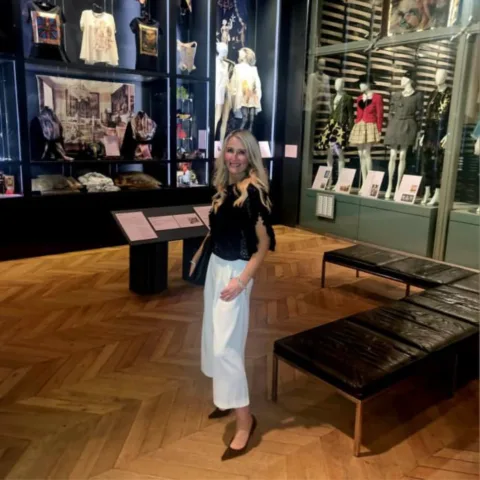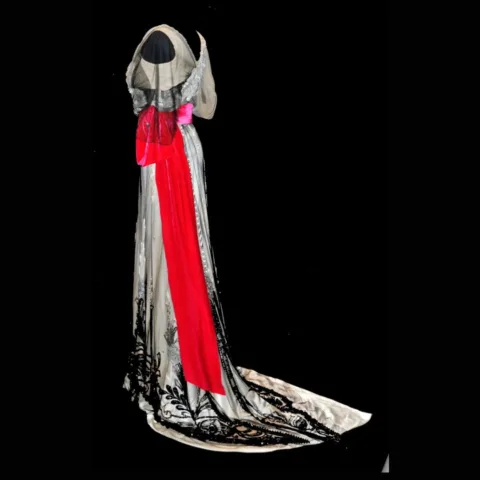The Bowes Museum Blog

A WW1 Officer’s tunic: Conservation Report
For the current YSL: Style is Eternal exhibition, a selection of garments from the Fondation Pierre Berge-Yves Saint Laurent have been installed into the peninsular cases in the Museum’s Fashion & Textile Gallery, to be shown alongside our own collection.
In the case displaying early 20th century costume, we have installed an Yves Saint Laurent women’s trouser suit, representing the masculin-feminin section in the wider exhibition. Our Fashion Curator selected another piece of costume from our own collection to compliment it – a military tunic (CST.1674) – which I conserved and mounted for the display. The piece had previously been exhibited in Summer 2014, as part of a display of First World War costume in the Fashion & Textile Gallery.
The object in question is an Officer’s tunic from the Northern Cyclist’s Battalion, worn by Captain Fenwick, and is dated to the First World War. The Tunic was made by W. Langstaff & Sons, of Newcastle-on-Tyne, in fine lightweight serge fabric, with brass buttons and four large pockets on the front. The cuffs are finished with braid and applique embroidery.
The buttons are embossed with a wheel, above which is a crowned shield and two crossed guns; the lettering reads “NORTHERN”.The tunic was initially in a fair condition. It was lightly soiled with surface dust, and had several stains, including a blue ink stain on the upper-left pocket. The tunic was lightly creased, with several areas of insect damage, and some old stitched repairs.

W. Langstaff & Sons original label (up, left); cuff decoration (up, right); old mending repair on sleeve (centre, left); blue ink stain on pocket (centre, right); areas of loss due to insect attack (below)
The conservation carried out on the tunic was quite simple, but necessary to stabilise the object before putting it on display. It consisted of surface cleaning, patched support, crease removal and mounting onto an acrylic mannequin.
First of all, the tunic was thoroughly surface cleaned, using a low suction museum vacuum to remove the dust and other deposits from surface, both inside and out.
After the cleaning, it was necessary to dye some fabric of the same type, weight, and weave, in this case, wool serge, to match the original. This fabric was used for patched supports, in several areas, where insect damage had created holes. Most of the old mending stitches were removed and the damage conserved. The areas of damage are consolidated using conservation stitching (a laid-couching technique), with a fine curved needle and polyester thread (Gutermann Skala 360) in a matching color.
The next step was to remove the creases using the steamer, and surface cleaning the brass buttons using IMS (Industrial Methelated Spirits) and cotton swabs, to remove dust and oily deposits.
The last step consisted of the size adaptation of one of our male acrylic mannequins, using some Melinex to create the ‘skirt’ extension; polyester wadding, cotton tape and a fabric cover to increase the volume in the waist; and some polyester wadding and calico arms. Due the difficulty of adapting an acrylic mannequin inventiveness is crucial. In this case, a system of cotton tape is created to allow for the fixation of the padding and fabric. Finally, to avoid the sight of the cotton tape a piece of linen fabric, colour matched to the lining of the tunic was inserted in the back, with a cutaway to leave the original manufacturer’s label visible.

CST.1674 on mannequin before adaptation (left), mannequin after adaptation (centre); CST.1674 on mannequin after adaptation (right)
You can see this garment and much more until the 25th October 2015.
By Maria Pardos, Icon/HLF Textile Conservation Intern

![CST.1674 front (left) and back (right) before conservation [80 x 72 x 5 cm]](https://thebowesmuseum.files.wordpress.com/2015/07/2-overall-initials.jpg?w=660)













